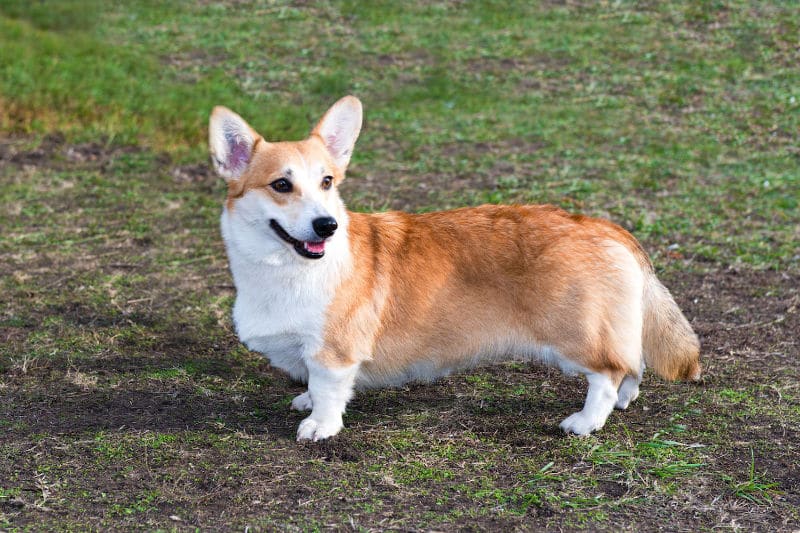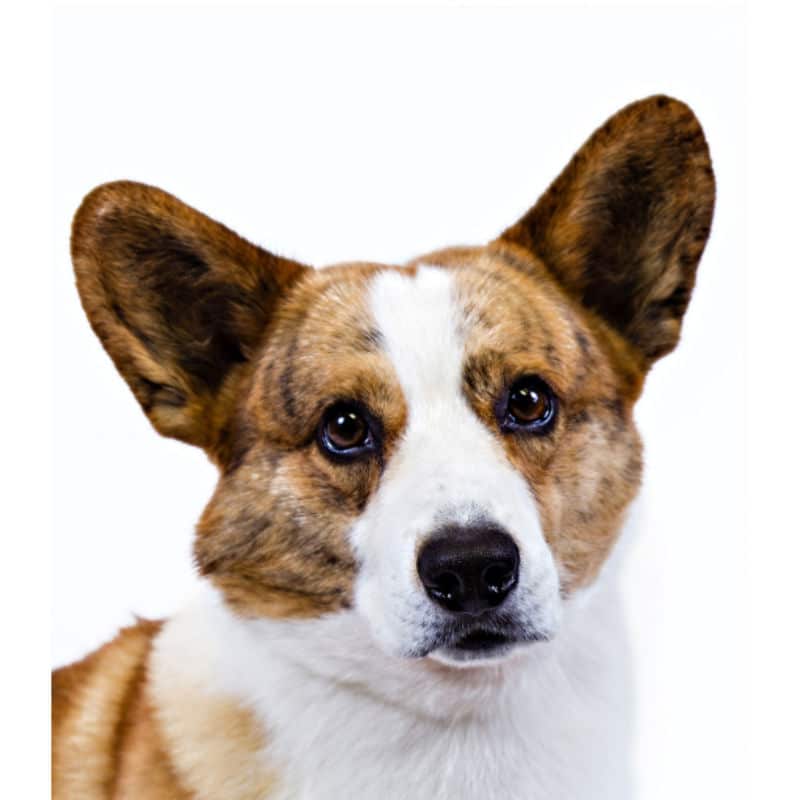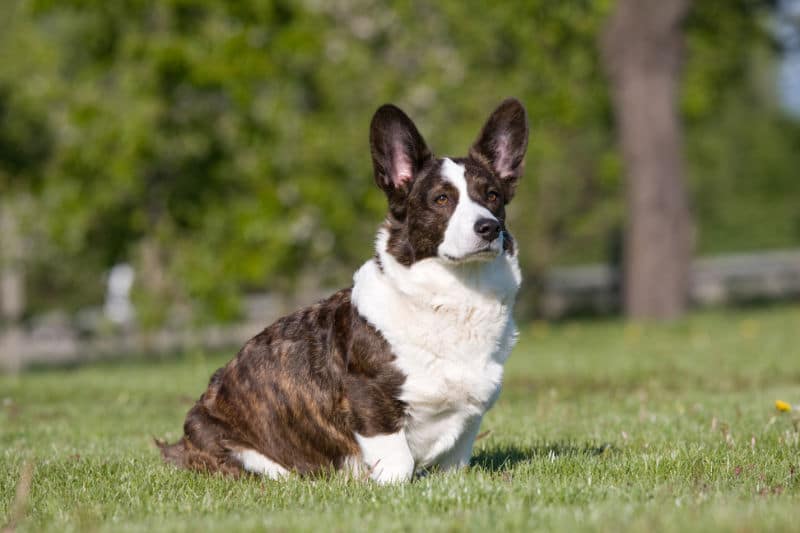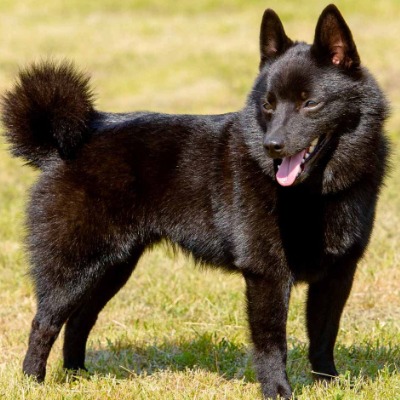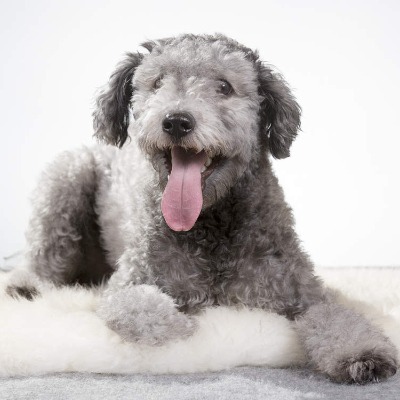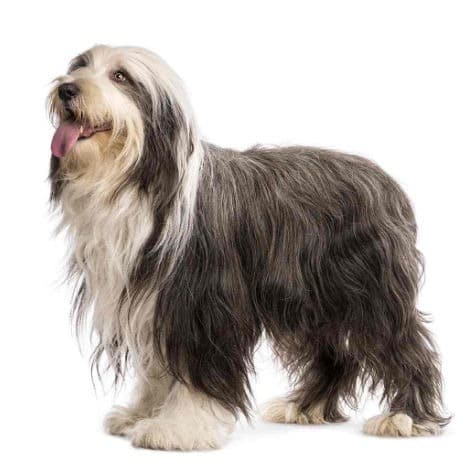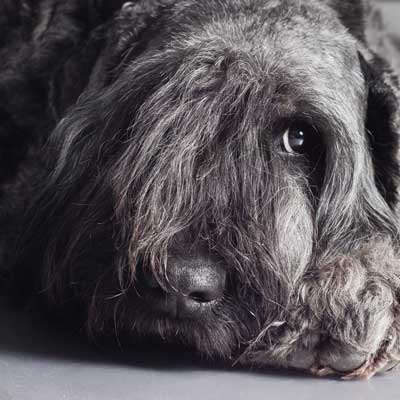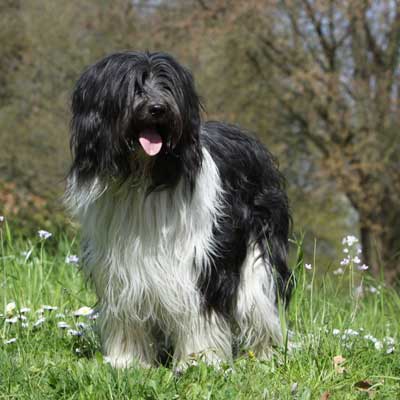-
Testa
forma e aspetto di muso di volpe
-
Testa - regione del cranio
Cranio: ampio e piatto tra orecchi; diminuisce progressivamente verso gli occhi, al di sopra dei quali si presenta leggermente a cupola
Stop: moderato
-
Testa - regione del muso
Tartufo: nero; sporge leggermente e non è assolutamente smussato.
Muso: si assottiglia moderatamente verso il tartufo
Mascelle /denti: denti forti con chiusura a forbice, cioè con gli incisivi superiori che si sovrappongono a stretto contatto agli inferiori e sono impiantati perpendicolarmente alle mascelle. La mascella inferiore nettamente delineata. È forte ma senza essere sporgente
Occhi: di media grandezza, limpidi, dall’espressione amichevole, sveglia, ma guardinga. Inseriti piuttosto distanziati con angoli nettamente definiti. Preferibilmente scuri, o in armonia col mantello; bordi palpebrali scuri.
Uno o tutti e due gli occhi azzurri, blu o macchiettati di blu, sono permessi solo nei blue-merle.
Orecchi: eretti, piuttosto larghi se proporzionati alla taglia del cane. Moderatamente larghi alla base hanno punte leggermente arrotondate, e sono distanziati circa 8 cm. Portati in modo che le punte siano leggermente al di fuori di una linea retta che dalla punta del naso, passa dal centro degli occhi, e inseriti bene indietro in modo che possano essere tenuti appoggiati piatti lungo il collo.
-
Collo
muscoloso, ben sviluppato, proporzionato alla mole del cane. Si inserisce nelle spalle ben oblique
-
Corpo
piuttosto lungo e forte
Linea superiore: orizzontale
Rene: vita nettamente segnata
Torace: moderatamente ampio con sterno prominente. Regione sternale discesa, costole ben cerchiate.
-
Coda
simile a quella della volpe, inserita sul prolungamento della linea dorsale e moderatamente lunga (da arrivare o quasi al suolo).
Portata bassa in stazione, può essere alzata un po’ al di sopra della linea del corpo in movimento, ma non arrotolata sul dorso
-
Arti
ossatura robusta. Gambe corte ma il tronco nettamente distanziato dal suolo
-
Arti anteriori
Spalle: ben appoggiate, muscolose; formano con l’avambraccio un angolo di circa 90°
Gomiti: aderenti al torace
Avambraccio: leggermente arcuato per seguire la forma del torace.
Piedi anteriori: rotondi, chiusi, abbastanza grandi, provvisti di buoni cuscinetti. Leggermente girati in fuori.
-
Arti posteriori
Forti, ben angolati e allineati, con cosce e gambe muscolose; forte ossatura fino a terra.
Gambe: corte
Metatarso: verticale in stazione, visto di lato e da dietro
Piedi posteriori: rotondi, compatti, piuttosto larghi e con buoni cuscinetti.
-
Andatura
movimento libero e vivace, con i gomiti ben aderenti al corpo, non scollati né troppo stretti.
Anteriori che hanno un buon allungo senza levarsi troppo da terra, in sintonia con la spinta del posteriore.
-
Mantello - pelo
corto o medio, di tessitura dura. Impermeabile, con buon sottopelo.
Preferibilmente diritto
-
Mantello - colore
qualsiasi colore, con o senza macchie bianche, ma il bianco non deve predominare
-
Taglia e peso
Altezza al garrese: ideale 30 cm
Peso in proporzione alla taglia, tenendo in considerazione innanzitutto l’equilibrio dell’insieme.
-
Difetti
qualsiasi deviazione da quanto sopra deve essere considerato come difetto e la severità con cui verrà penalizzata deve essere proporzionata alla sua gravità e ai suoi effetti sulla salute e sul benessere del cane, e sulla sua capacità a svolgere il suo tradizionale lavoro.
-
Difetti eliminatori
- Cane aggressivo o eccessivamente timido
- Qualsiasi cane che mostri in modo evidente anormalità d’ordine fisico o comportamentale sarà squalificato
N.B. I maschi devono avere due testicoli apparentemente normali completamente
discesi nello scroto

